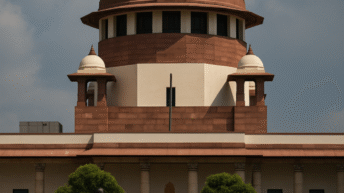
Background
The Jammu and Kashmir’s region has historically been the shining crown of the Indian subcontinent; in ancient texts, the Indian subcontinent was known as Jambudweep. Jambu, or the Jammu region along with Kashmir valley, is mentioned in multiple historical and religious texts of India, as a place which had great significance in the spiritual and intellectual domain.
The situation in Kashmir has changed significantly after the abrogation and rewording of articles 370 and 35A in the Indian Constitution in August 2019. The Union Government geared up developmental initiatives on all significant fronts, such as infrastructural development, financial inclusion, education, and livelihood opportunities. This article is a tiny contribution to the analysis of government policies of the last five years aimed at mitigating economic risks in Jammu and Kashmir.
Government Initiatives for economic transformation of Jammu & Kashmir
To enhance the security measures, the Government of India has boosted the presence of the Indian Army, paramilitary forces, and local police, so that peace can be maintained in the conflict zones of Jammu and Kashmir. National Security Guards (NSG) and Rapid Action Force (RAF) have been deployed to counter terrorism and prevent riots. Recently the use of drones has been increased by the authorities, CCTV cameras and advanced monitoring systems are set up to detect potential threats and support intelligence agencies. The mobile application ‘Satark Nagrik’ has been developed to enable citizens to report any suspicious activities or incidents easily and securely.
The government is taking several steps to modernise the infrastructure including roads, hospitals, and power stations in J&K. By March 2022, more than 17000 KM of roads had been built under the PM Gram Sadak Yojna. This network of roads connected 2074 locations. The Railway ministry commissioned the Udhampur-Katra, Quazigund-Baramula and and Banihal-Quazigund Sections of the railway line to Srinagar. Since 2020, power projects for more than 3000 MW have been revived and progress is ongoing. The Jal Jeevan Scheme of the Union government has connected around 57% of the households to running water; the earlier percentage was 31%. Srinagar and Ganderbal have been declared ‘Har Ghar Jal’ districts. All schools in rural areas, Anganwadi centres, and health institutions now have the tap-water connection.
The Government is taking several steps to develop tourism and transform J&K from a hotspot of terrorism into a tourism magnet. As per the tourism department of Jammu & Kashmir, there is a huge surge in the number of visitors. In 2023, more than 2.1 crore tourists visited the union territory. Be it the G20 Tourism Group Meeting or the Formula 4 inaugural racing event or the launch of the Mercedes-Benz electric vehicle, every effort is made to promote tourism in J & K.
The Central Government has also introduced several schemes to encourage investment in Jammu & Kashmir. Under the Working Capital Interest Subvention Scheme, a 5% interest subsidy is offered on a working capital loan of Rs. 1 Cr for up to five years. Under Capital Investment Incentive, a capital interest subsidy at 6% is granted on loans of up to Rs. 500 Cr for up to seven years. A 100% subsidy is offered on new Diesel Generator (DG) sets from 10 KW to 1000 KW capacity. 100% subsidy on DG sets for commercial layer and boiler farms is available upto a maximum of Rs. 4.5 lacs. The subsidy is paid via bank in two installments, half of the amount after installation and the remaining after one year. A new credit card scheme has started for providing loans to weavers and artisans at 7% for five years. Under the ‘SAMARTH’ web portal, weavers and artisans can sell their products online.
The government has taken several skill development and education initiatives for the people of Jammu & Kashmir. The UDAAN scheme is a Special Industry Initiative (SII J&K) intended for skill development and improving employability for around forty thousand youths over five years. The Deen Dayal Upadhyay- Grameen Kaushal Yojana, often called HIMAYAT yojana, is a special skill development program for school and college dropouts. The National Skill Training Institute in Srinagar provides long-term courses in several subjects for the people of Jammu & Kashmir. The PM SHRI Yojana funds the development of school infrastructure and improves learning outcomes. Herbal gardens are set up in many schools for raising awareness about medicinal plants and promoting entrepreneurship.
Evaluation of Government Initiatives
Abrogation of Article 370 in 2019 was a major step by the Union government, towards the improvement of the situation in the State. The scrapping of J&K’s autonomy brought some opposing response, mainly from the valley, but the government controlled the situation and no mass protests, mis-information or unrest were recorded. As an integral part of India, all the laws of the Indian Union are applicable in J&K. Non-Kashmiris can now own lands here, leading to more investments in various sectors and to funds pouring in from outside, boosting the economy and hence increasing employment opportunities.
The front on which the government looks most successful, is in drastically reducing the militancy in the Kashmir region. Post 2019, no violent shutdown, routine stone-pelting or civil unrest has been witnessed. Till the end of 2019, the annual number of militant attacks was 250, an average which got reduced to 126, 103 and 29 in 2021, 2022 and 2023 respectively. However, the militant attacks are now showing some unusual trends; there are more attacks targeting security forces in the Jammu region instead of the valley. This is not only due to the lower military presence there, it is also intended to create communal unrest in Jammu which has a mixed population of Hindus, Muslims, and Sikhs whereas Kashmir’s population is mostly Muslim.
The economic development of a state is dependent on several factors such as investment opportunities, industrialisation, and job creation. Five years after the abrogation of Article 370 and ten years after the BJP came to power at the centre, the promises related to economic development in J & K have yet to materialise. The National average rate of unemployment is 6.1%, while in J & K it stands way higher at 26.6%. Government’s effort to boost tourism in the union territory is commendable, but will not have a major impact, as the contribution of this sector to the GDP of J&K is only 7-8%. Agriculture accounts for the biggest share of the economy, but local farmers face trouble because of cheap fruits imported from other countries.
Recommendations
- The Beat policing system may be effectively organized in the region by effectively incorporating the key elements of technological synchronisation with community participation in policing in line with states like Karnataka, Kerala and others. In Madhya Pradesh Police, in every locality there are people of repute and prestige designated as ‘Nagar Suraksha Samiti’ who act as a liaison between the police and the public, this may be introduced in the J&K region to safeguard the infrastructure, politico-economic mainstreaming of population and de-radicalization.
- The Cooperation between agencies like the J&K Police Crime and Criminal Tracking Network and Systems (CCTNS) and the Multi Agency Centre may be revamped under a new name and agency network in the region to effectively implement the Bharatiya Nyaya Sanhita (BNS) and the Bharatiya Nagarik Suraksha Sanhita (BNSS). It is important to make sure there is at least one local unit in all districts and important strategic locations. This mechanism can also be used to do a thorough background check of individuals who are applying for government positions.
- On the financial front, the Government may ask public sector banks to increase the number of their branches and ATMs in the remote areas of Jammu & Kashmir. Private banks may also be given infrastructural support for the extension of their branch networks. Workshops on financial inclusion, digital banking and financial literacy may be conducted through the joint effort of banks, government departments, security forces, and NGO volunteers.
- Customised banking products may be developed specifically for the local entrepreneurs, farmers, and businessmen. Small Finance Banks, Microfinance Institutions, Non-banking finance companies and Fintech may be encouraged to provide small-ticket loans to underserved populations to fund entrepreneurship.
- Telecom companies should be kept in the loop and helped to provide secured internet connections, so that the internet may be used only for banking purposes, limiting access to other applications for the time being.
- The traditional medicine of the region like Sowa Rigpa should be marketed all across India; there may be a joint initiative of National Institute Of Sowa Rigpa (NISR) Leh, IIM Jammu and the Entrepreneurship Development Institute of India (EDII) to foster upskilling and entrepreneurship development in the region. E-commerce platforms solely dedicated to these entrepreneurs may be developed so that they may gain direct access to the global market.






Add comment